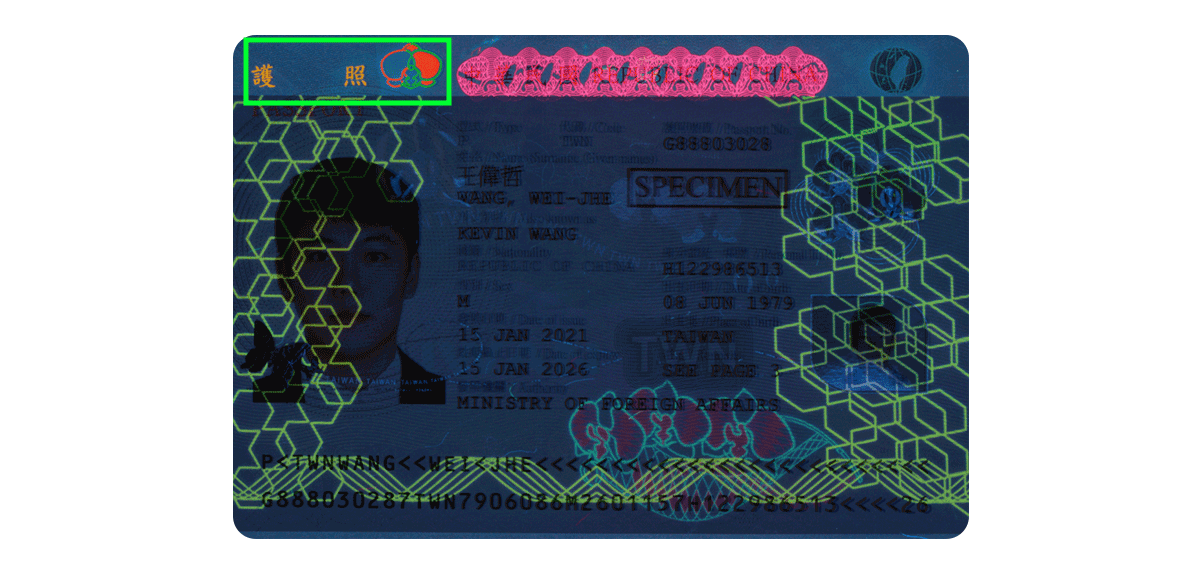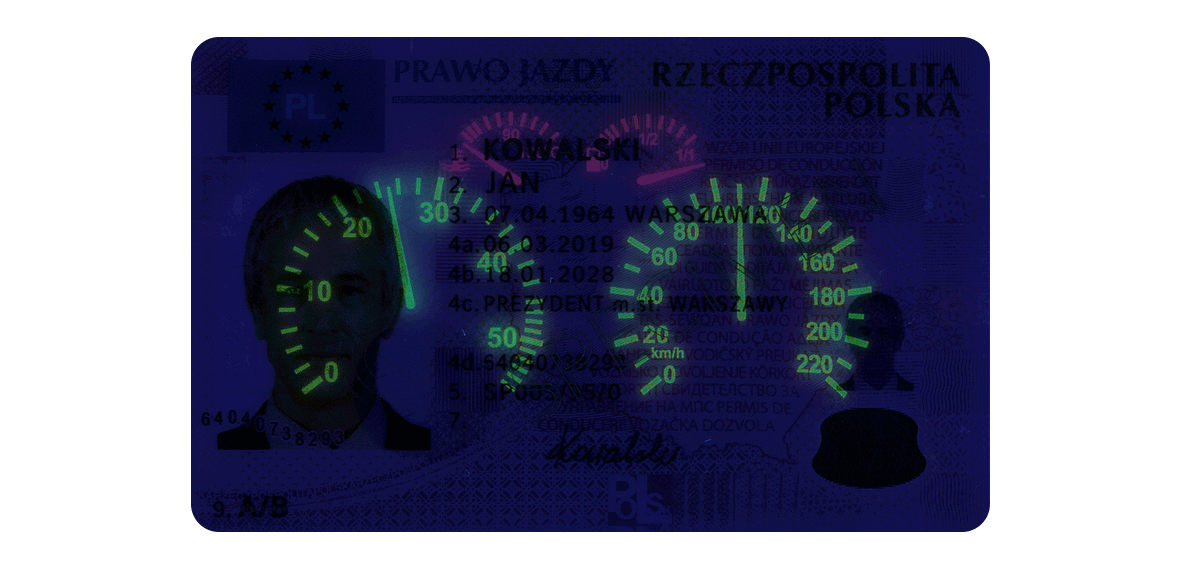Along with many other applications, from nightclub interiors to science laboratories, luminescent paint (or in this case, ink) is also used for whimsical security features in identity documents and banknotes.
Simply put, luminescence is all about emitting light from different surfaces. However, there are scientific details worth grasping for examining the luminescent effects on money and IDs.
This article provides you with the basics. What are the types of luminescence? Is there a vast difference between luminescence and fluorescence? Which luminescent inks are used for anti-counterfeiting measures? And how can you detect the effects they produce?
Let’s turn on the light.
Get posts like this in your inbox with the bi-weekly Regula Blog Digest!
What is luminescence exactly?
The simplest definition of luminescence is light emission by certain materials that have not been pre-heated.
Taking a closer look, there are some specific features:
Process: Any object emitting luminescent light, be it a firefly or a 5-euro banknote, should absorb energy first.
Light: Luminescent objects emit light at different wavelengths, which changes the conditions where the effect can be observed.
Duration: Luminescence is not a never-ending story; the effect goes on from nanoseconds to hours, so there is “flash” and “glow” luminescence, respectively.
At an atomic level, luminescence emerges when electrons going off their orbits tend to get back on track. They are called “excited,” since this state is a kind of stressful (or exciting!) situation for electrons.
Among others, the “exciter” that begins the process is visible narrow-band light, ultraviolet (UV), or high-intensity infrared (IR) light. It causes physical reactions accompanied by the release of luminous energy.
Types of luminescence
Depending on what kind of primary energy is causing the light emission, there are:
Photoluminescence—the object emits light by absorbing radiant or light energy;
Chemiluminescence—the light emission is a part of a chemical process;
Triboluminescence, or friction luminescence—the object generates light when it’s mechanically ripped, crushed, rubbed, etc.;
Cathodoluminescence—the object glows when bombarded by fast-flying electrons;
and more.
Specifically, photoluminescence has found application in the verification of documents and banknotes.
The effect can be detected when observing elements applied with luminescent inks, which can be visible or invisible. The former usually change colors, flash, or glow when you evoke the luminescence effect. Pale or clear in ordinary light, the invisible inks acquire color and brightness in UV or IR. Both kinds of inks have a rich palette of colors, but red, orange, green, yellow, and violet elements are more typical.
There are also two types of photoluminescence. If the light emission stops immediately after you remove the exciter, the effect is called fluorescence. When the object continues glowing for a while after that, this is called phosphorescence.
More detailed classification includes the following photoluminescence types:
IR fluorescence
UV fluorescence
Anti-Stokes fluorescence
UV phosphorescence
Detecting and observing all the effects we mention below requires optical forensic equipment. For this article, we used the Dual-Video Spectral Comparator Regula 4308. However, all Regula devices are up to the task.
Let’s zoom in.
IR fluorescence
This effect can only be detected in a certain IR range. Once luminescent pigment is excited with visible narrow-band light—green, blue, or red—you can see it glows in the IR range with a wavelength of 700-1000 nm.
The piece of a document or banknote containing the pigment shines until you change the light source.

The visible patterns in a Maldivian passport glow when observing in the IR light.
UV fluorescence
Fluorescence is the vivid emission of light from a substance that has absorbed energy from visible or UV light in a particular range: 365, 313, and 254 nm. The effect continues less than one millisecond after excitation.
Diverse fluorescent inks react differently depending on the exciter range.
For example, the visible elements can become brighter and more saturated when exposed to UV.

Matte elements in a Taiwanese passport are vividly yellow and scarlet in UV 254 nm by changing their colors.

The front side of a Latvian ID card glows brightly under UV 365 nm. The motif becomes paler under UV 313 nm, while the "Latvia" inscription changes color to pink.
Invisible fluorescent inks observed in UV can turn into colorful ones.

A pattern in a Lithuanian residence permit applied with invisible fluorescent inks appears in all its splendor at UV 365 nm.
Anti-Stokes fluorescence
This fascinating effect occurs when the emitted luminous energy is more impulsive than the absorbed energy. After exciting the object with a high intensity IR (980 nm), you can detect Anti-Stokes fluorescence in the visible light range (380-700 nm).
The pigment of such fluorescent ink contains crystals of rare-earth metals and is invisible in the daylight. Previously not widespread, these inks are now commonly used in documents and banknotes, for example, in China. The invention of chemical substitutes for their rare components can be one of the reasons.

The Anti-Stokes fluorescence effect can be detected on the data page of a Moldavian passport.
UV phosphorescence
Elements applied with phosphorescent inks absorb UV and re-emit light of a different wavelength for a while—typically longer than one millisecond—after exposure.
This type of ink is also called glow-in-the-dark. The emitted light may have yellow, green, red, or blue color depending on the ingredients of the ink.
For instance, the UV phosphorescence in a 500 Kenyan shilling banknote from 2019 excited by UV 365 nm fades away within a few seconds when observed with no lighting.
Detection of luminescent effects in banknotes and identity documents
Luminescent reactions (let’s switch to this term, which covers all varieties of inks that emit light) are solid security features in banknotes, stamps, cheques, driver’s licenses, etc. There are graphical patterns, serial numbers, glow-in-the-dark planchettes, and fibers.
Detection approaches depend on the type of luminescent inks, namely, the characteristics of their pigments. The characteristics also determine the exciter type—visible, UV, or IR light.
All luminescent ink groups require specific optics or light sources to be examined. Since these are basic security features, you can identify them even with devices for express verification of passports, IDs, banknotes, etc.
Let’s take a look at some examples with a Polish driver’s license as a sample.


Some patterns on the license are glowing in IR.

When you expose the document to UV, the invisible fluorescent inks come into view. Depending on the UV range (UV 254 nm or UV 365 nm), the patterns change color and brightness.

The Anti-Stokes effect can be detected in those parts of the document where special pigments are applied. In a Polish driver's license, the country name and stars in the EU flag emblem look great when excited by high-intensity infrared light.
Why you need assistance in the authentication process
Although many first-line forensic devices help detect luminescent security features in money and identity documents, the variety of passports and banknotes in circulation makes the task more difficult.
And there’s yet another challenge: You need to get a clear idea of what security features you’ll see and how they should look in different ranges of UV or IR. And you can be sure that the issuing bodies have a Hollywood-like imagination when developing such patterns.
At Regula, we leverage our decades of expertise in forensics and identity verification to create robust Information Reference Systems with passports, driver’s licenses, and banknotes issued across the globe. Regularly updated, they provide detailed references of documents and money, including scans under different light sources.
The main Regula IRS is natively integrated into Regula Forensic Studio—software for obtaining and processing images when operating Regula devices. It makes the examination process easier by reducing the need to manually set the light source in some devices. You can choose a reference image from the IRS—for instance, the personal data page of a Latvian passport—and define the verification parameters to fully prepare a comparator to examine a particular document.
This feature also comes in handy when you want to take a closer look at some element in the document or banknote. When you zoom in on the object in the IRS, the device optics do the same. As a result, you can compare the two elements—the sample image and the physical object—at the right resolution. You can learn more about the Regula Forensics Studio integration and watch a video of how it works.




.webp)
